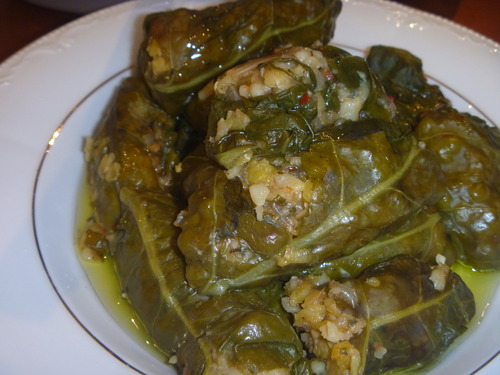
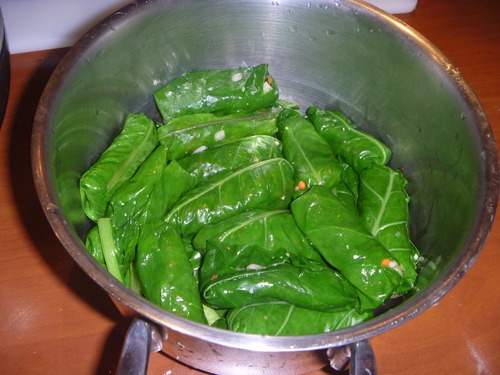
This is what Turkish chard leaves look like, but any chard leaf will do. The rainbow leaves, which I have not seen here, would be especially beautiful.
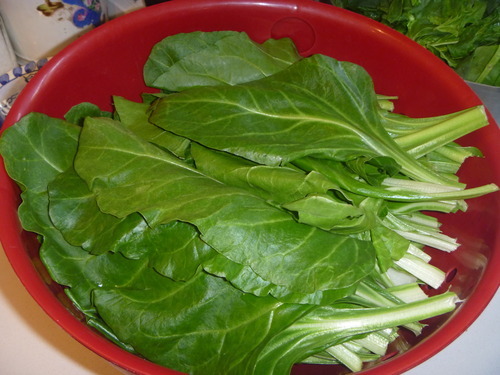
1. Start by washing your leaves well to rid them of any dirt. Some cooks recommend a little white vinegar in the washing water to encourage any critters who are malingering to take a walk. Then blanch the leaves in a pot for about a minute. Remove and rinse with cold water and put aside while you make the filling.
2. There are various fillings, of course, most of them with meat, but easily adapted to a non-meat filling as well. Some people prefer to pre-cook the filling, and some allow it to cook during the steaming process at the end. Or you can do a combination of cooking some ingredients and letting the others cook while steaming. That is what I have done here.
3. First of all, chop your onion to a small enough size that it won’t break the leaf of the chard.
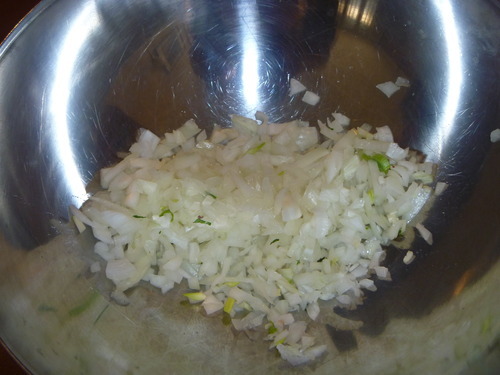
4. In a small pot, gently saute your onion until it is nicely brown, but not burnt. If you are adding meat, this would be the time to sauté it with the onions.
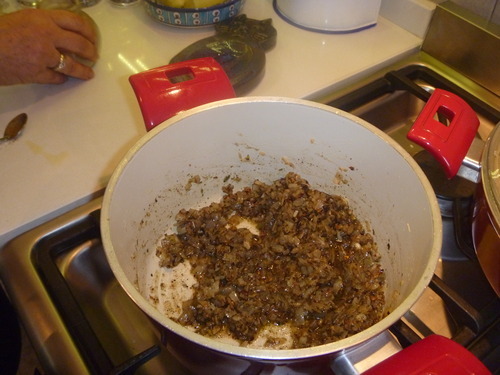
To make the rest of the filling you need:
5 ) Ingredients for filling:
a) a good dollop of tomato paste
b) half a cup of the uncooked grain you are using (rice or bulgur are the common ones, but quinoa would also work nicely, precooked)
c) 2-3 cloves of garlic, minced
d) half a cup of red lentils if you are not using meat
e) parsley and dill in abundance, finely chopped
f) half a Tablespoon of pomegranate molasses
g) 1Tablespoon salt (or less)
h) ½ teaspoon of ground black pepper
i) a teaspoon (or more) of red pepper flakes
This version uses uncooked bulgur and uncooked onions, but the process is the same regardless.
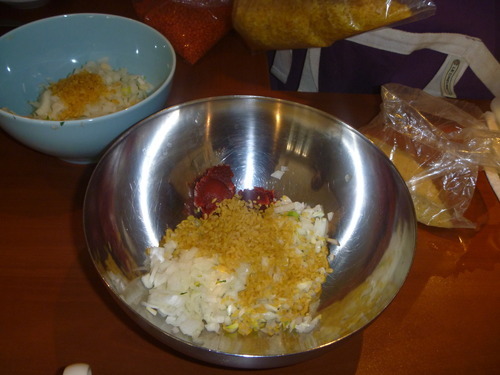
6) Add your minced parsley and dill, plus the red lentils. Mix all together

The Rolling Process
7) Place your blanched leaf on a board, shiny sound down, stem side up. First you will snip off the stem and save it. It will line the bottom of our steaming pan. You may also need to make a narrow “V” on the bottom part of the leaf to remove any stem that would be too tough to roll.

8) Take a very small amount of the filling and shape it in your palm before you place it on the flattened leaf. It should be cylindrical in shape. If you overfill your leaves, they will certainly burst in the steaming process.
Beginning at the end with the stem, take the stem side first, roll it on top of the filling, tuck the sides in, and keep rolling until you have completed the whole leaf.
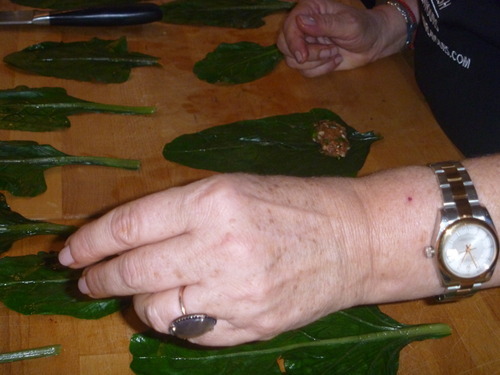
9) Here is what one roll looks like:
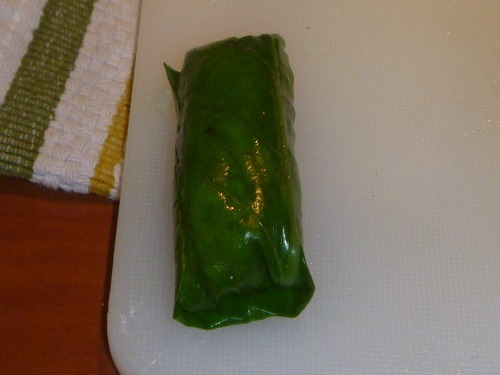
More rolls
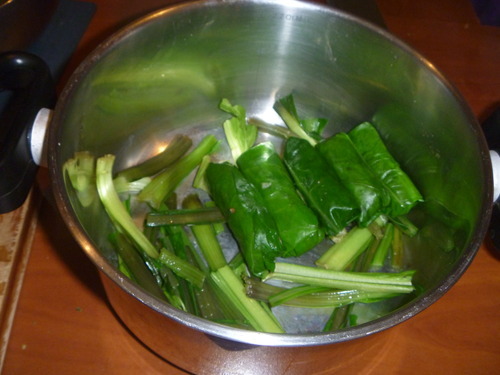
Many rolls
10) Meanwhile, line the bottom of your cooking pot with the stems you have snipped off. They will cushion the pot for the steaming.
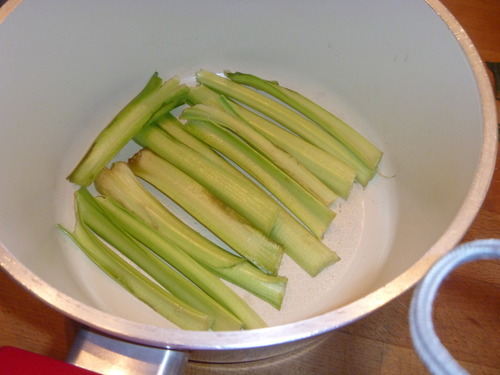
11. Place your rolls tightly together in the pot and then decide if you want a tomato sauce or will just steam with water. If you decide on tomato sauce, take a dollop from this brand, or another, but a good quality, and mix with water in a tall glass.
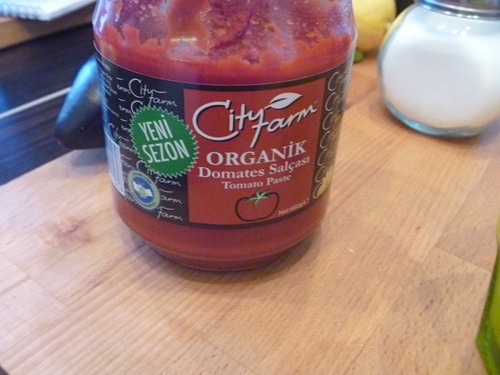
12.
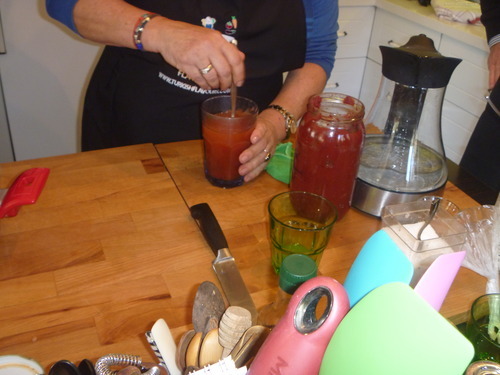
13. Pour your sauce over your chard rolls.

14. Here is a ceramic device used for steaming. You place it on top of your rolls and the heaviness of the ceramic will keep the rolls from moving. If you don’t own one, just put a lid from a smaller pot on top of the leaves.
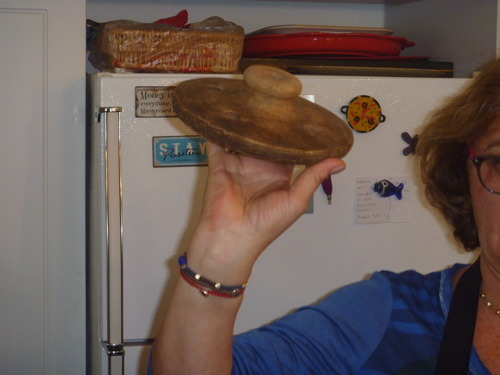

15. Most Turkish and Middle Eastern cooks use a tea towel to absorb moisture during the last stage of the steaming/cooking process, often when the flame has already been turned off. That way, moisture will not drip onto your precious creation.
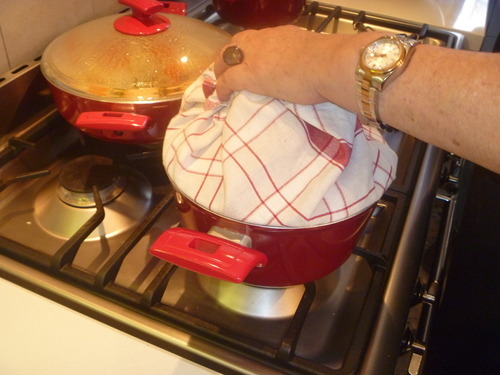
Here we have the finished chard rolls (this is without the tomato sauce).

Serve plain or with yogurt.
Thank you to Selin .